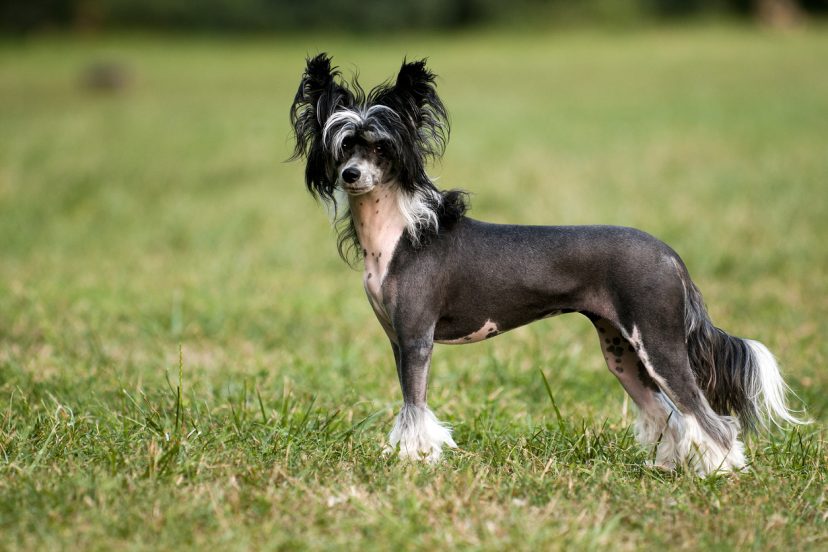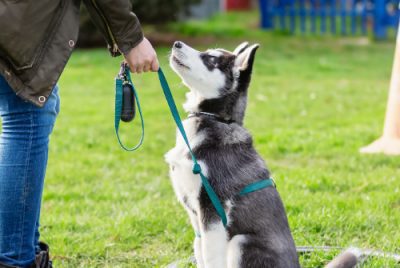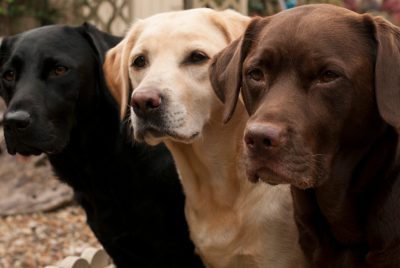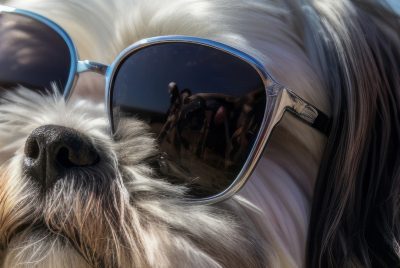Top Hypoallergenic Dogs for Allergy Sufferers
Post Disclaimer
We may earn a commission for purchases made using our links. Please see our Disclaimer to learn more.
Best Hypoallergenic Dogs for Allergy Sufferers
Are you an allergy sufferer who loves dogs but can’t bear the sneezing, itching, and watery eyes they bring? Fear not! Hypoallergenic dogs are here to save the day. These dogs produce fewer allergens than their non-hypoallergenic counterparts, making them a great option for people with allergies. In this blog, we will take you on a tour of the best hypoallergenic dog breeds around. From the aristocratic Afghan Hound to the cheerful Bichon Frise, we have got them all covered. We will also tell you what makes a dog hypoallergenic and help you choose the right breed for your home. So say goodbye to your allergy symptoms and hello to your new furry best friend!
Understanding What Makes a Dog Hypoallergenic
While no dog is completely hypoallergenic, certain breeds are more suitable for allergy sufferers. These dogs have hair instead of fur, which produces less dander. The curly or wiry coat of hypoallergenic breeds helps to trap allergens, and some even have a double coat that sheds less and produces less allergenic saliva. Breeds like the Bichon Frise and Poodle are known for their hypoallergenic qualities, making them a great choice for those with dog allergies. So if you’re an allergy sufferer, consider these furry friends who won’t leave you sneezing.
Affenpinscher: The Monkey Terrier
They say good things come in small packages, and the Affenpinscher is no exception. This hypoallergenic breed, with its monkey-like appearance, is a delightful addition to any family or individual looking for a furry friend. With their intelligent nature and big personalities, Affenpinschers are known for being cheeky companions. Their wiry coat requires regular brushing to keep it looking its best. Despite their small size, these little terriers can thrive in various living environments, making them perfect puppies for city dwellers or those with limited space.
Grooming an Affenpinscher
Maintaining an Affenpinscher’s wiry coat requires regular grooming. Brush the coat at least once a week to prevent matting and remove loose hair. For a top-condition coat, professional grooming every 4-6 weeks is recommended. Enhance their distinct appearance by trimming the hair around the face and ears. Don’t forget about overall grooming and health – regular nail trims and dental care are important. Grooming an Affenpinscher ensures they look their best and stay healthy.
Afghan Hound: The Aristocratic Hypoallergenic Dog
The Afghan Hound epitomizes elegance and regality, making it a top choice among hypoallergenic breeds. With its long, silky coat, regular grooming is crucial to prevent matting. Known for their aristocratic appearance and graceful movement, Afghan Hounds are best suited for experienced dog owners who appreciate their gentle and independent temperament. These majestic dogs thrive in calm and loving environments that provide ample exercise and mental stimulation. Discover the aristocratic allure of the Afghan Hound, a hypoallergenic companion that exudes sophistication and charm.
Grooming an Afghan Hound
Maintaining the beauty of an Afghan Hound’s long, silky coat can be a delightful but demanding task. Daily brushing is crucial to prevent tangles and matting. To keep their coat looking its best, professional grooming every 4-6 weeks is recommended. Regular bathing and conditioning help maintain cleanliness and the coat’s health. Trimming the hair around the ears and paws can enhance their distinctive appearance. Proper coat care ensures the overall well-being of Afghan Hounds, as well as other breeds like retrievers. Grooming this regal breed isn’t just maintenance; it’s an art form. Additionally, wire fox terriers are also known for their distinctive coats and require regular grooming to maintain their appearance.
Portuguese Water Dog: The Sailor’s Friend
The Portuguese Water Dog is a versatile and intelligent hypoallergenic breed. With their curly or wavy undercoat, they have the perfect balance of style and low shedding. Historically used by fishermen, these dogs are natural swimmers with a love for the water. They thrive in active environments that provide mental and physical stimulation. So, if you’re ready to embark on an adventure with a furry friend who’s as comfortable on a boat as they are on land, the Portuguese Water Dog may just be the perfect fit for you.
Grooming a Portuguese Water Dog
Keeping your Portuguese Water Dog looking their best requires regular grooming. Their curly or wavy coat needs to be brushed a few times a week to prevent matting and tangling. To maintain their coat in top condition, professional grooming every 4-6 weeks is recommended. Regular bathing and conditioning help to keep their natural oils and texture intact. Enhance your furry friend’s appearance by trimming the hair around their face and paws. Grooming a Portuguese Water Dog is an essential part of caring for this lively and intelligent breed.
Bichon Frise: The Cheerful Lap Dog
With its curly and fluffy coat, the Bichon Frise is a small and cheerful hypoallergenic breed that brings joy to any household. Regular grooming is necessary to prevent matting and maintain their adorable appearance. Known for their affectionate nature, Bichon Frises love being lap dogs and make great companions for individuals or families of all ages. They are highly adaptable and can thrive in various living environments. Add a pup Bichon Frise to your family and experience the happiness they bring.
Grooming a Bichon Frise
Grooming a Bichon Frise, a popular breed of small dogs, entails regular maintenance of their curly and fluffy coat. Daily brushing is crucial to prevent matting and maintain a pristine look. For that signature, Bichon Frise appearance, professional grooming every 4-6 weeks is recommended. Regular bathing and conditioning keep the coat clean and healthy. Don’t forget to trim the hair around the face and eyes to enhance their irresistible cuteness. With proper grooming, your Bichon Frise will be the epitome of charm and style.
Basenji: The Barkless Dog
Basenjis, the barkless dogs, are a perfect choice for noise-sensitive individuals. With their short coat, grooming becomes minimal, reducing the risk of allergic reactions. These hypoallergenic dogs produce less dander, making them less likely to trigger allergies. Their intelligence and trainability make them great companions for families. Basenjis, being medium-sized, fit well in both apartments and larger homes. So, if you’re looking for a furry friend without the barks, consider the Basenji!
Grooming a Basenji
Grooming a Basenji is a breeze thanks to their short coats, minimizing the time and effort needed for maintenance. A regular brushing routine helps control shedding and keeps their coat clean and healthy. When it comes to bath time, keep in mind that Basenjis have a natural aversion to water, so it’s best to bathe them as needed. Don’t forget to keep their ears clean and nails trimmed for their overall health and well-being. Additionally, regular dental care, such as brushing their teeth, helps prevent dental issues in Basenjis.
Chinese Crested: The Hairless Companion
If you’re looking for a hypoallergenic dog that’s both unique and adorable, look no further than the Chinese Crested. With their hairless or powder-puff coat varieties, including the iconic white coats, they are a great choice for allergy sufferers. The absence of fur means less pet hair and dander in your environment, minimizing allergic reactions. These small-sized dogs are perfect for apartments and homes with limited space. But don’t let their lack of hair fool you – Chinese Cresteds are known for their friendly and affectionate nature, making them wonderful companions for families. They are also highly adaptable and can thrive in different climates and living situations. So if you’re in search of a furry friend without the fur, consider the Chinese Crested as your perfect companion.
Grooming a Chinese Crested Dog
Grooming the unique Chinese Crested dog requires special care to keep their skin healthy and protected. These hairless dogs need regular moisturizing and bathing to remove dirt and oils from their exposed skin. On the other hand, the powder-puff variety of Chinese Cresteds requires regular brushing and grooming to prevent matting. Don’t forget to apply sunscreen to protect their delicate skin from sunburn. Lastly, maintaining good oral hygiene by brushing their teeth regularly is essential for Chinese Cresteds. If you’re looking for a breed that requires less grooming, consider the soft-coated wheaten terrier.
Irish Water Spaniel: The Clown of the Spaniels

Irish Water Spaniels, with their unique curly coat and low dander production, are a great choice for allergy sufferers. But it’s not just their hypoallergenic qualities that make them special. These playful and clown-like dogs bring endless joy and entertainment to any household. With their intelligence, Irish Water Spaniels excel in activities like obedience, agility, and water sports. Their medium size makes them adaptable to different living arrangements, and their loyalty and protective nature make them excellent family pets. So why not add a little laughter to your life with this delightful breed?
Grooming an Irish Water Spaniel
Maintaining the curly coat of an Irish Water Spaniel is no small task. Regular brushing is essential to prevent matting and tangling, ensuring their beautiful appearance. To maintain their desired look, professional grooming every few months is recommended. Keeping their coat clean and free from dirt and debris requires regular bathing. Additionally, frequent ear cleaning is crucial, especially for those with floppy ears, to prevent infections. Lastly, don’t forget to trim their nails regularly to avoid discomfort and potential injuries. Grooming an Irish Water Spaniel is indeed a labor of love!
Maltese: The Ancient Lap Dog
Maltese dogs, with their long, silky, hypoallergenic coat, are a perfect choice for allergy sufferers. These small-sized dogs are well-suited for apartment living and make fantastic companions for individuals and families alike. With their friendly and affectionate nature, they excel as lap dogs. Their intelligence and eagerness to please make them easy to train and adaptable in various environments. Despite their small size, Maltese dogs have a long lifespan, bringing joy and companionship for many years.
Grooming a Maltese
Grooming a Maltese is essential to keep their beautiful coat looking its best. Regular brushing helps prevent matting and keeps their fur soft and silky. These dogs also require regular baths to keep their skin and coat clean and healthy. Trimming around the eyes and sanitary areas ensures cleanliness, while regular teeth brushing helps prevent dental issues. Keeping their nails trimmed is important for their comfort and overall well-being. Grooming a Maltese is an important part of their care routine.
Giant Schnauzer: The Protective Working Dog
Giant Schnauzers are intelligent and trainable, making them a loyal and protective breed. With their hypoallergenic coat, they produce less dander, making them suitable for allergy sufferers. Regular grooming is necessary to maintain their double coat and prevent matting. These dogs have strong guarding instincts, making them excellent watchdogs. With their active and energetic nature, they require regular exercise to stay happy and healthy. Get yourself a Giant Schnauzer – your protective and furry friend!
Grooming a Giant Schnauzer
Keeping your Giant Schnauzer looking beautiful requires regular grooming. Their double coat needs to be kept clean and free of mats, so brushing at least once a week is essential in removing loose hair and preventing tangles. To maintain their coat’s texture and appearance, professional grooming every 4-6 weeks is recommended. Don’t forget to regularly trim their nails and clean their ears for overall hygiene. When bathing them, use a hypoallergenic shampoo to avoid irritating their sensitive skin.
Standard Schnauzer: The Robust Protector
Standard Schnauzers are versatile and adaptable dogs known for their intelligence and versatility. This hypoallergenic breed is ideal for allergy sufferers due to their low-shedding coat. Their playful and energetic nature makes them great family pets and companions. To keep them mentally stimulated and physically fit, regular exercise is essential. Early socialization and training are crucial to prevent any potential behavior issues. With their robust and protective nature, Standard Schnauzers make excellent guardians.
Grooming a Standard Schnauzer
Keeping your Standard Schnauzer looking fabulous is a must! Their wiry coat requires regular brushing to prevent tangles and mats. To maintain its texture and appearance, consider hand-stripping or clipping the coat every few months. Don’t forget about their overall hygiene – trim their nails, clean their ears, and provide dental care regularly. When it’s bath time, use a hypoallergenic shampoo to avoid any skin irritation. Plus, grooming sessions are the perfect opportunity to ensure their skin is healthy!
Shih Tzu: The Little Lion Dog
Affectionate and friendly, the Shih Tzu is renowned for its luxurious coat and playful personality. This hypoallergenic breed sheds less and produces less dander, making it an ideal choice for allergy sufferers. Regular grooming is essential to keep their coats tangle-free and healthy. Although they adapt well to apartment living, daily exercise and mental stimulation are still necessary. With their love for human companionship, they make excellent lapdogs and family pets. So why not add a little lion to your life?
Grooming a Shih Tzu
Grooming a Shih Tzu involves regular brushing to prevent tangles and mats in their long, flowing coat. Keeping their coat clean and free of dirt and debris requires regular bathing. Professional grooming every 4-6 weeks helps maintain the length and texture of their coat. Trimming nails, cleaning ears, and dental care are important aspects of their grooming routine. Additionally, regular grooming sessions provide an opportunity to check for any skin issues or health problems.
Poodle
Curly-coated poodles are the perfect choice for allergy sufferers seeking a furry friend. Their hypoallergenic coat minimizes shedding and dander, reducing the risk of allergic reactions. Regular grooming is essential to maintain their coat’s hypoallergenic properties. The American Kennel Club recognizes three poodle sizes: standard, miniature, and toy. With their intelligence and trainability, poodles make an ideal addition to any family. So, if you’re looking for a smart and hypoallergenic companion, consider welcoming a poodle into your home.
Grooming a poodle
Keeping a poodle’s coat hypoallergenic requires regular grooming. Poodles have dense and curly coats that need frequent brushing to prevent matting. Professional grooming every 4-6 weeks keeps their coat clean and allergen-free. Trimming the hair around their eyes, ears, and paws reduces the risk of irritation. Regular baths with hypoallergenic shampoos minimize allergens on their coat. So, embrace the curls and enjoy a sniffle-free furry friend.
Can You Find a 100% Hypoallergenic Dog?
While there is no such thing as a 100% hypoallergenic dog breed, hypoallergenic dogs produce fewer allergenic proteins in their saliva and dander. However, individual reactions may vary, and some people may still experience allergies. Taking steps to reduce allergens in the home, like regular grooming and cleaning, can help minimize allergic reactions. Consulting with a doctor or allergist before adopting a hypoallergenic dog breed is recommended.
Choosing the Right Hypoallergenic Dog for Your Home
When it comes to choosing a hypoallergenic dog for your home, it’s important to consider your lifestyle, activity level, and living situation. Researching different hypoallergenic breeds is key, as you want to find a dog that matches your preferences and needs. Factors such as size, exercise requirements, grooming needs, and compatibility with children or other pets should also be taken into account. Meeting the dog in person and spending time with them can help determine compatibility and allergy sensitivity. Consulting with breeders, rescue organizations, or veterinarians can provide valuable insights and guidance.
Understanding the Grooming Needs of Hypoallergenic Dogs

Grooming hypoallergenic dogs is essential to maintain their unique coat. These dogs often have hair instead of fur, requiring regular care to prevent matting and tangling. Brushing their coat frequently removes loose hair and prevents tangles. Trimming their hair, especially around the eyes and ears, improves hygiene and reduces the risk of infections. Regular bathing with hypoallergenic shampoos keeps their coat clean and minimizes allergens. Professional grooming every 4-6 weeks helps maintain their coat’s length and texture. So, keep your furry friend looking fabulous with proper grooming!
There are a number of grooming tools that can help with the pet dander. Thankfully, there are products that you can use at home to help with the hair. The one that I recommend is the Neakasa Grooming Kit.
Frequently Asked Questions
How do hypoallergenic dogs differ from other breeds?
Hypoallergenic dogs are different from other breeds in several ways. They produce fewer allergens, which can help reduce allergic reactions in sensitive individuals. Additionally, hypoallergenic dogs typically have hair instead of fur, which means they shed less and may cause fewer allergies. Some popular hypoallergenic breeds include poodles, schnauzers, and Maltese.
What are some of the best hypoallergenic dog breeds for people with allergies?
Discover the best hypoallergenic dog breeds for allergy sufferers. These breeds, including Poodle, Bichon Frise, Maltese, and Shih Tzu, have hair instead of fur, reducing shedding and dander. Other options include Yorkshire Terrier, Portuguese Water Dog, and Irish Water Spaniel. Consult with a vet or breeder to find the perfect hypoallergenic dog for your specific allergies.
Conclusion
In conclusion, if you’re an allergy sufferer who loves dogs, there is hope! Hypoallergenic dogs are a great option for those with allergies as they produce fewer allergens compared to other breeds. From the playful Affenpinscher to the regal Afghan Hound, there’s a hypoallergenic dog out there for everyone. Keep in mind that while these breeds are considered hypoallergenic, individual reactions may vary, so it’s always a good idea to spend time with the dog before bringing them home. Don’t let allergies stop you from experiencing the joy and companionship of a furry friend. Take the time to research and find the perfect hypoallergenic dog that suits your lifestyle and needs.















